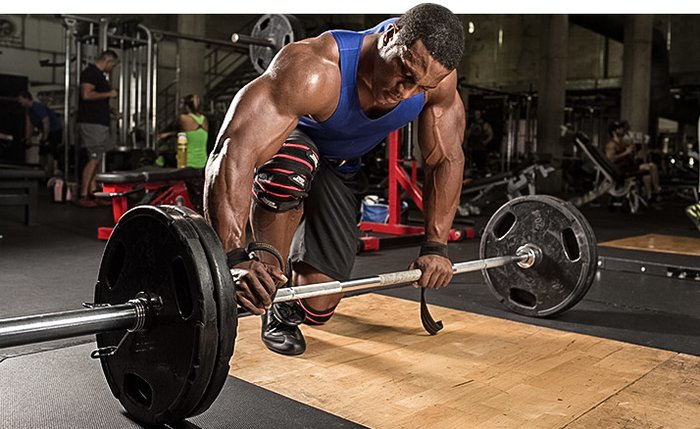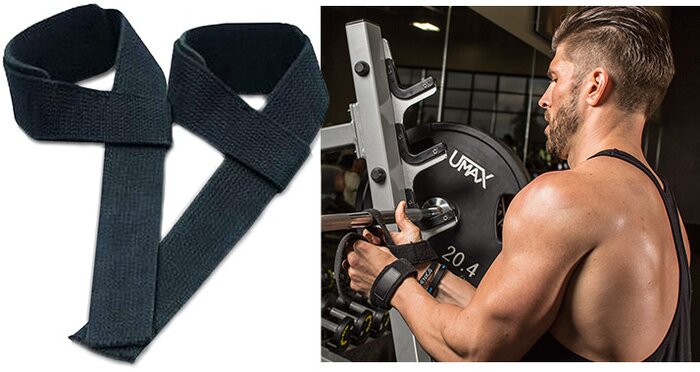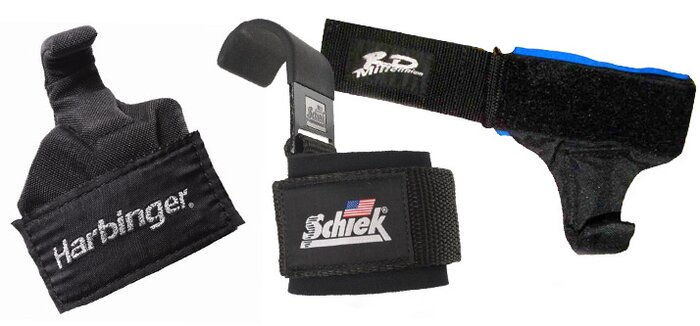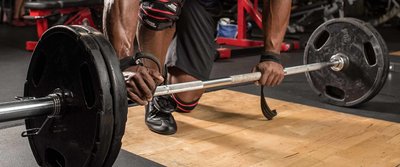Walk into any weight room today, and you're pretty much guaranteed to see it: a long strap, usually black, dangling from the end of a lifter's arm as he or she walks around between sets. As that lifter sets up, they performs a little squirming dance to attach the strap to the barbell, kind of like a bull rider preparing for their 8-second adventure. When the strap is tight, the lifter's muscles tense, and the weights move like nothing.
What's going on? In simple terms, wrist straps are sewn pieces of cloth or leather that loop around your wrist and the bar that make it easier to hold on to a heavy weight. They are commonly used by bodybuilders and casual gym-goers, but wrist straps can be extremely valuable to powerlifters and other strength athletes, too.
But that description doesn't even begin to capture the immense arguments that happen online about straps. What are they good for? What aren't they good for? Are you less of a beast if you wear them, or are they the key to becoming a beast in the first place? Here's what you need to know.
Why Wear Wrist Straps?
Jason Ferruggia once wrote, "No straps, no traps." Never have four truer words been spoken. Well, maybe truer words were spoken a few times, but never by someone with traps like Jason's to back those words up.
Plenty of Internet tough guys will scream and shout that straps are "cheating," and you should never use them. From a certain perspective they have a point, because straps aren't allowed in powerlifting—although they are often allowed in strongman competition, for what it's worth. And while I always preach specificity for powerlifting training, if used carefully and selectively during prep, straps can help you make strength and size gains that will directly carry over to your main lifts.

Perhaps the number one benefit of using straps is that they allow you to fatigue the target muscle without worrying about your grip failing first.
As for noncompetitive lifters, there's no doubt that they will help you make strength and size gains that lead to...well, more strength and size gains.
Perhaps the number one benefit of using straps is that they allow you to fatigue the target muscle without worrying about your grip failing first. This is in direct accordance with the "right link/wrong link" rule that should govern just about everything you do in the weight room.
You don't know that rule? You should. It was introduced to me by my grad school professor, Fred DiMenna, a former pro bodybuilder with a Ph.D. in oxygen uptake kinetics (yeah, he's smart). He helped hammer home to me the importance of this simple test when selecting an exercise.
It's just two simple questions:
- What's the target muscle of the exercise?
- Which muscle fatigues first?
If the answer to each question isn't the same, it's a lousy exercise. Fred always said that exercises needed to be hard not just for the sake of being hard but for the right reasons.
So, if your intent is to improve the size and strength of a certain muscle group, and using straps improves your ability to do so, wear them without shame!
Some examples include:
- Dumbbell or barbell rows
- Shrugs
- Deadlifts (unless it's your competition lift)
- Romanian deadlifts
- Rack pulls
- Curls (I'm kidding, but we've all seen it done)
All these exercises are intended to improve muscle size and strength in the upper back, traps, and hamstrings—not to directly train a competition lift. Therefore, there's no reason not to wear straps, especially if you can't hold on to the bar long enough to fatigue the target muscle group.
How to Put On Your Wrist Straps
Putting on your wrist straps and attaching them to the bar can be tricky. Wrapping technique will vary based on the length of the strap and where the loop is sewn.
Everyone has their favorite method, but here's mine: I find it easiest to wrap one hand exactly where I want it, then wrap the other hand closer to the already-wrapped hand (so I can use it for help with the wrapping process), then slide the second hand into position.
Types of Straps
There are three main styles of straps to choose from: loop straps, speed/Olympic straps, and hook straps. Here's the bottom line on each.
Loop Straps

Pros
- They're the easiest variation to find, with multiple lengths and materials to choose from, including cloth and leather.
- Loop construction allows for secure fit around your wrist.
Cons
- It can be tough to wrap the extra material around the bar, especially with one hand.
- Extra material can get in the way and make it hard to bail out of a failed lift. That's why these aren't as commonly used with Olympic lifts.
Speed straps/Olympic straps

Pros
- The closed loop makes them quick and easy to attach to the bar.
- It's easier to bail out of a failed lift, which is why they're the go-to for Olympic lifting—although, as I note below, not everyone believes straps should be used for the Oly lifts.
Cons
- Less material means a less-secure grip.
- You can't adjust the tightness around your wrist.
Note: In a pinch, you can also make an ad hoc version of a closed-loop strap using a loop strap. Just loosen your loop to the point where it is in your grip rather than on your wrist.
Hook Straps

Pros
- No wrapping is required.
- A standard bar sits comfortably in the hooks.
Cons
- You can't squeeze the bar tightly in your hands, which can negatively impact your technique on certain lifts.
- These don't fit around many specialty bars.
- Many people think they look kinda, well, "douchey."
Wrapping It Up
That last comment about the hook straps deserves a little more explanation—both the technique part and the part about what people think of you. Despite what I was saying about the right link/wrong link earlier, your grip does play an important role in the technique of a number of lifts. In deadlifts and Romanian deads, your hands help you set your lats and protect your back. In pull-ups, squeezing the bar hard helps you generate more strength throughout your arms and back.
Does this mean you should never use straps for these moves? Not necessarily. Instead, just keep these rules in mind:
- Don't do everything, all the time, with straps. Work without straps until your grip begins to fail or limit your technique, and then use them to finish your work.
- If you do lots of work with straps, do some dedicated forearm work to maintain and build up your grip.
- Don't feel like you have to strap up just to hit a certain weight. It's fine to let your grip dictate how much you lift, if that's your thing. You can still get stronger without straps!
- When it comes to cleans, snatches, squat cleans, and other Olympic lifts, many people are anti-strap because of the potential for broken wrists and overconfident lifters. If you want to learn these lifts, learn how to fail safely—that's more important than whether you strap or not.
As for the haters, don't sweat them. If you're doing quality work and getting stronger and more muscular, there's nothing to be ashamed of. Just tell them to get a grip!

